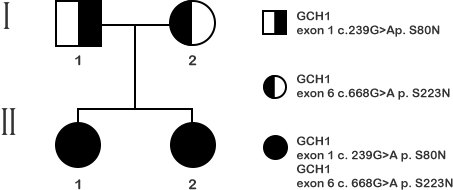Clinical indications
Family with a history genetic disease
Patients with atypical disease characteristics without diagnosis
Patients with physical and mental disabilities
Couples who want to check the reason of recurrent miscarriage or stillbirth
Patients who have failed to find a genetic cause by clinical exome sequencing
Technology
Wet lab (Genomic DNA)
Illumina NovaSeq 6000; Capture based tech (nano WES / IDT / Agilent probe)
Average 100X sequencing coverage, Q30 > 90%, 20X coverage rate > 95%

Dry lab (Bioinformatics)
VeritaTrekker® Variants Detection System (SNVs, CNVs, InDels)
Enliven® Data Annotation and Interpretation System
Cruxome Interface®

Case sharing
Two female siblings originally diagnosed with "cerebral palsy" had received long-term treatment with no significant improvement in perennial paralysis and language skills. Family WES tests found that both girls inherited pathogenic mutations in the GCH1 gene associated with the metabolic disease Dopa-responsive dystonia (DRD). Both girls have now been successfully effectively treated by oral Medopa (Benserazide-Levodopa), reducing the severity of symptoms and improving their quality of life. This case fully demonstrates the important role of WES in the precise diagnosis and treatment of genetic diseases.

Why choose Berry Genomics for WES
Integrated professional teams for sequencing, data analysis and reporting
Fast turnaround time
Comprehensive disease report for clinical geneticist, including supplementary file listing all potentially pathogenic mutations
Option of uploading raw data by Cloud to local hospitals for secure storage and reanalysis options
Competitive pricing
The clinical significance of WES/CES
Can provide a precise diagnosis for children with unexplained phenotypes where previous testing has failed to give the answer
Can help explain the genetic basis of fetal structural abnormalities detected by ultrasound during pregnancy
Can point the way to potential treatment options for children to improve their health and quality of life
Can guide the development of prenatal and preimplantation genetic tests so couples
can confidently proceed to have a second child free of the familial disease condition


